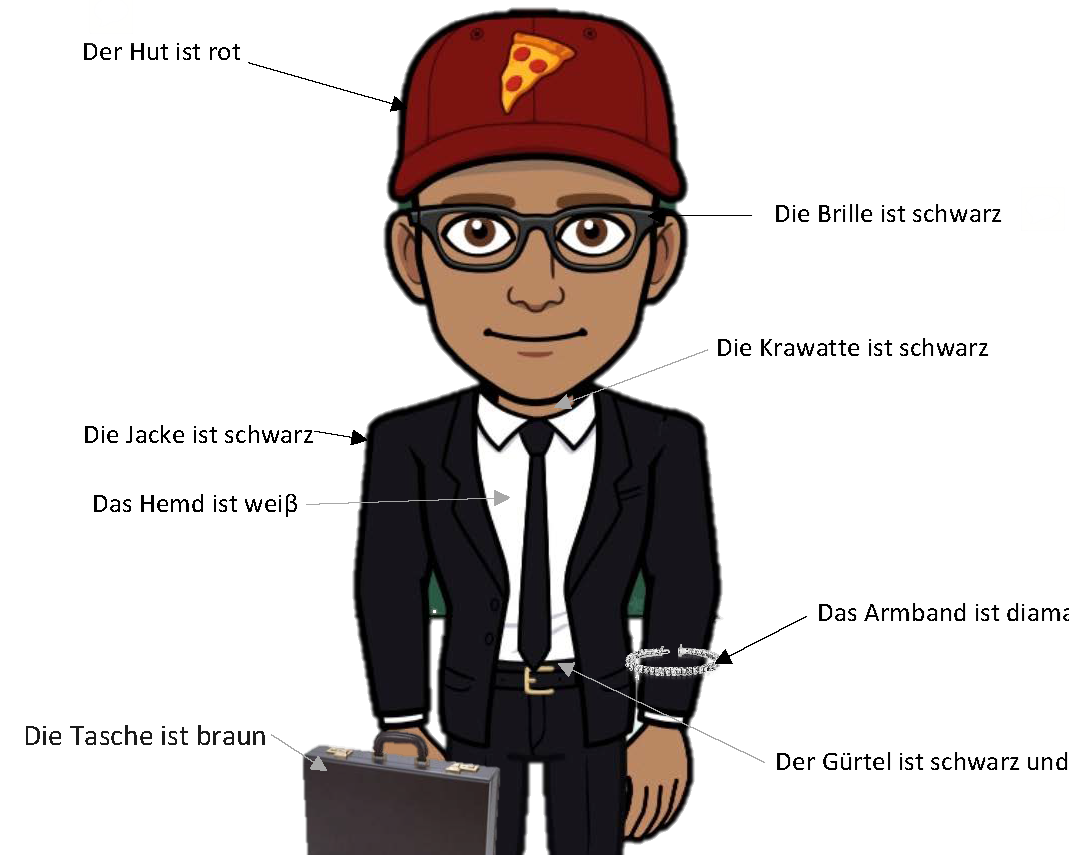Languages: German - Satisfactory - Years 7 and 8 (Year 7 entry)
Portfolio summary
This portfolio of student work shows the student can share information about their personal worlds, including personal details (WS1), family (WS2), friends, interests, likes, dislikes and preferences (WS5, WS6). The student interacts with others to carry out transactions (WS3), participate in class routines and socialise. The student uses modelled language and simple expressions to ask and respond to familiar questions (WS5) and give and respond to instructions (WS1, WS3), request help or permission, ask for information (WS1), clarification or assistance (WS3), and clarify answers. When socialising, the student makes simple statements (WS1, WS2) and uses key features of pronunciation (WS7), stress and intonation, including short and long vowel sounds, single consonants, blends and diphthongs, in different words, phrases and sentences (WS1, WS2, WS3, WS5). The student obtains key points of information (WS1) and identifies main ideas in simple texts relating to own world and that of teenagers in German-speaking countries, using contextual clues to help make meaning. The student uses high-frequency vocabulary to describe characters (WS4), events and ideas (WS5) encountered in imaginative texts, and creates short informative and imaginative texts using modelled sentence structures and formulaic expressions with present tense forms of regular and some irregular verbs, and correct word order (WS2, WS3, WS4, WS5, WS6). The student uses a range of grammatical elements to describe people, objects, actions, events and relationships (WS2, WS3, WS4, WS6), including articles, personal pronouns (WS3, WS6) and some possessive adjectives in the nominative and accusative (WS2, WS4, WS6). The student qualifies meaning with reference to time, manner and place using everyday adverbs and phrases (WS6), link words, phrases and sentences and other connectives (WS2, WS4). The student works with German and English to translate texts and creates simple bilingual texts for peers and family, noticing where equivalence is not possible. The student identifies the relationship between language and culture, giving examples of adjustments made as a result of reactions and intercultural experiences and explains how aspects of their own identity impact on intercultural exchange (WS7).
The student identifies German as an important European and global language and that it is related to English and identifies some of the common variations in German used in different contexts by different people (WS6, WS7). The student differentiates statements, questions, imperatives and exclamations according to intonation, sentence structure and punctuation. The student understands and applies grammatical concepts such as gender and number, and nominative and accusative case (WS2, WS4, WS6). The student identifies key similarities and differences between the phonological and orthographic systems of English and German, including the Umlaut and Eszett, capitalisation (WS4, WS7), and punctuation used in numbers (WS6).






